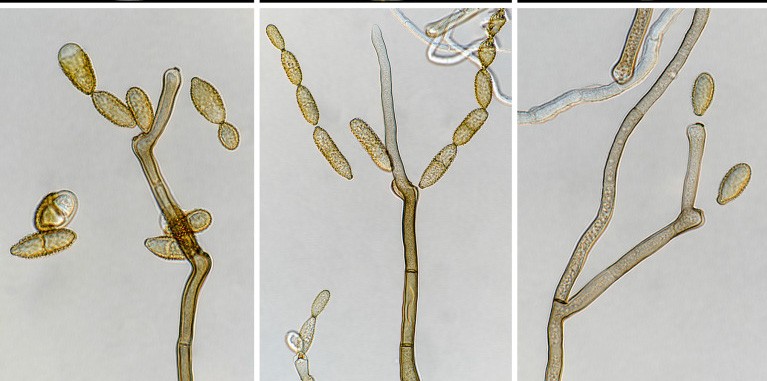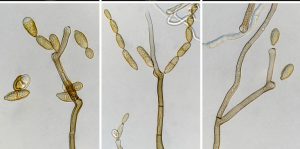
Cladosporium
Cladosporium is a fungus that mostly found in indoor and outdoor molds. It is a species that formed in simple or branching chains and produced olive-green to brown colonies with pigmented conidia. Many of these Cladosporium species commonly found on living and dead plant materials. In which spores are dispersed by the wind that is why it is extremely abundant in outdoor air. On the other hand indoor species may grow when moisture of the surface is present. These species also belongs to a monophyletic group that is well bounded by having a unique coronate structures. In this current research a multilocus DNA sequence typing approach been conducted. As well as morphological examinations and cultural characteristics used as basis for identification and delimitation.
Diversity of Cladosporium in indoor environments

Cladosporium phylogeny and taxonomic structures have been reviewed extensively however, no enough study conducted about its presence in indoor environments. A molecular phylogenetic approach has been made to identify common indoor species. Since fungi usually present in indoor environment that produced toxins or holds allergens which cause hazards on health. That is why it is very important to know what are fungal species thrives indoors.
There were 46 species found indoors wherein four are found to be human-derived samples. Sixteen species identify as new in which 6 belong to Cladosporium complex and the most common are Cladosporium halotolerans. These indoor species grow better compared to other indoor fungi such as Aspergillus and Penicillium. As part of worldwide survey of the indoor mycobiota about 520 new Cladosporium isolates collected mainly from China, Europe, North America, South Africa and New Zealand.
Moreover, Cladosporium exhibits very condensed growth pattern forming round pigmented cells in the central colony and quick spore formation. It can also grow at lower available nutrients and the ability to deal with humidity changes in indoor situations. Interestingly the availability of water for these fungi is highly dynamic and influenced by changing temperature. The pure morphological identification of Cladosporium is clearly possible with the aid of molecular data and Cladosporium halotolerans is the most frequently isolated Cladosporium species indoors.
Source: Prepared by Joan Tura from Studies in Mycology
Volume 89, March 2018, Pages 177-301

